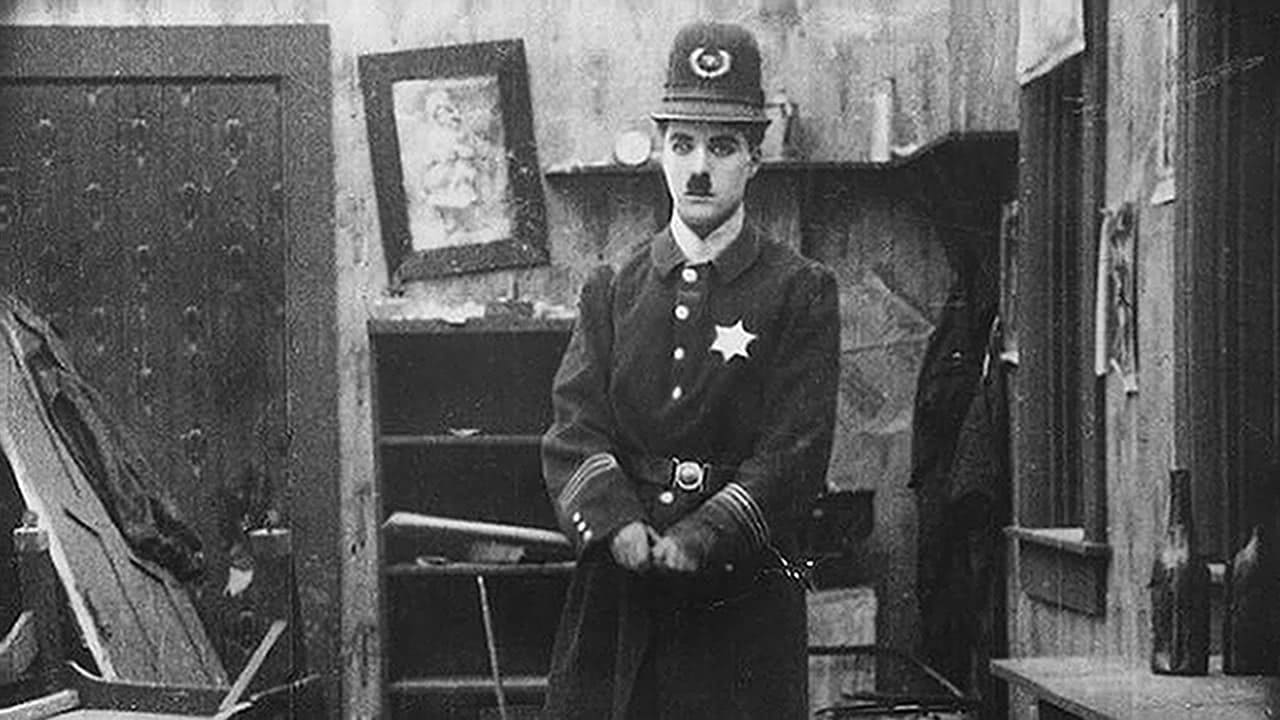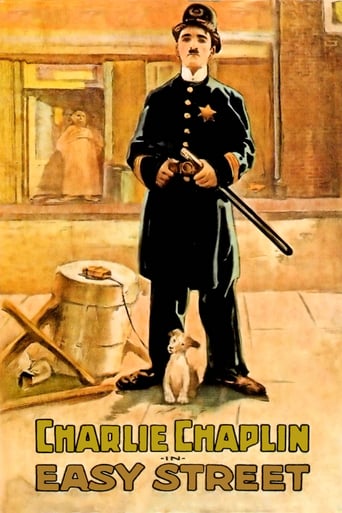

ridiculous rating
... View MoreI didn’t really have many expectations going into the movie (good or bad), but I actually really enjoyed it. I really liked the characters and the banter between them.
... View MoreWhile it is a pity that the story wasn't told with more visual finesse, this is trivial compared to our real-world problems. It takes a good movie to put that into perspective.
... View MoreStrong acting helps the film overcome an uncertain premise and create characters that hold our attention absolutely.
... View MoreA title card says "Back on top again". A tramp huddles in a doorway below a sign saying "Hope". Does this look like the opening to a slapstick comedy? In this, the ninth of Charlie Chaplin's pictures at Mutual studios, it is indeed a good few minutes before we even get a joke. But such was the delicacy and professionalism Chaplin put into his craft audiences did not, and still do not mind.While many of Chaplin's preceding pictures had featured some element of drama or poignancy, you can see in Easy Street that his merging of the two with comedy is now completely seamless. He is continually switching from one to the other, setting up deeper moments then bursting them with a gag. He even uses one to set up the other. An early Chaplin picture might have had us follow Charlie the rookie cop and discover with him how rough his beat is, but what we actually get is several cuts to scenes of fighting on Easy Street, culminating in the mighty Eric Campbell scaring off all comers. Campbell struts around the now empty street for a moment, and then, in the background, Charlie comes plodding round the corner. All those shots of the scuffle go towards building up this iconic and very funny entrance.Although Chaplin himself is on top form here, a couple of honourable mentions should go out to his supporting cast. This is perhaps the ultimate burly bully role for Eric Campbell. When you see him in that melee, he even looks like a big man among other big men, not just because of his gargantuan size but the way he carries that size. I love that close-up of him swallowing the key. If you're a good lip-reader you can tell he's saying "Ya see this? Ya see it?" which you have to imagine in a thick Scotch brogue (Campbell was from Strathclyde). Then there is a lesser-known Chaplin-regular, Charlotte Mineau, playing Big Eric's wife. Mineau was normally just a type-filler for a slightly older woman, but here she gets to show off her own slapstick skills, doing some very athletic bounce-back manoeuvres when Campbell pushes her over. For some unknown reason this was her last appearance for Chaplin.Easy Street is not the funniest Chaplin short by a long shot, but it is surely his best merging of dramatic and comedic elements so far. What other comedian of this period was tackling crime in the slums, domestic violence and drug abuse? Come to think of it, what mainstream filmmaker was? And in spite of its weighty subject matter Easy Street provides the laughs and the entertainment. When you look at how nicely done it is on all levels, you can see not only was Chaplin making by far the best comedies of the time, he was making some of the best pictures of any kind.Here comes the all-important statistic – Number of kicks up the arse: 1 (1 for)
... View MoreEasy Street is the ninth film Chaplin edited, wrote, directed, and produced for the Mutual Film Corporation. Chaplin attempts to combine slapstick with social commentary in this film. For the most part, he's successful, but the film just isn't as funny as other Mutual films. Chaplin finds salvation at a religious revival and becomes a policeman. Yet he's not so coincidentally dressed as a Keystone cop, and we know we're in for some fast-paced comedy. The streets are ruled by bully Eric Campbell, who once again serves as Chaplin's foil. Edna Purviance is the religious girl Chaplin saves from a drug fiend en route to cleaning up the neighborhood. There are many moments in the film that are equally comic as well as social commentary. The lack of respect for law and order, justifying stealing from sleeping shopkeepers, and the inevitable conclusion that order and respect trumps disorder and chaos. The highlights of the film involve Chaplin's attempts to subdue Eric Campbell, first with a gas lamppost and then with an end table through an open window. The film is generally recognized as Chaplin's most well known or best from his Mutual period, but I feel that other films like The Pawnbroker and One AM are more comically inventive and funny. This was one of Chaplin's first films to utilize social commentary. **1/2 of 4 stars.
... View MoreUntil late in his career, Charlie Chaplin's films often displayed a real "Populist" bent--advocating, indirectly, for better treatment for the poor and basic fairness. Later in life, this was taken to be an affinity for Communism or Socialism, but at this time in history, it was strongly in sync with the American ethos. Later, after feeling disinherited from his adopted country, he showed incredibly cynicism and disgust for humanity (such as in the terribly dark MONSIEUR VERDOUX--1947).This film is probably the best example of this social conscience. Charlie becomes a policeman and is sent into the most dangerous and horrid slum to "clean up the place". Most of the film is spent trying to apprehend the chief "baddie"--a mountain of a man played by Eric Campbell. It's very funny and great entertainment to see Charlie, through wits and agility, succeed.At the end, after the town has been pacified, we see the Utopian view of society as envisioned by Chaplin. The streets are clean, people (including Campbell) are decently dressed and civilized, employment agencies and social service agencies adorn the streets and all is well. Believe it or not, this did not seem preachy or out of place, as this ideal society was well-integrated into the film and gave a sweet positive ending to the film--much better than the police just bashing the bad guys up side the head and jailing everyone. Is this realistic? Not exactly, but it sure is nice to see how he saw how life COULD be in a better world.
... View MoreEasy Street starts with Charlie with as a poor, destitute tramp. After attending a storefront revival service, and meeting the always delightful Edna Purviance, he decides to turn his life around. He quickly gets a job as a policeman and he finds himself assigned to Easy Street, the worst neighborhood in the city ruled by tough Eric Campbell. Using his own unorthodox tactics, Charlie eventually subdues Eric and neighborhood and they all live happily ever after.Easy Street was one of the twelve films Chaplin made for Mutual. Mutual gave Chaplin unprecedented freedom and responded by giving them, overall, twelve of the best comedy shorts ever made. Easy Street is easily the best of them. It is a very funny short. This is the film I show when I want to introduce someone to Chaplin or silent films in general. The gags are inventive, and they are extremely well-played by his regular company of Mutual performers. Chaplin himself is at his best in this film, but where would he be without Eric Campbell, the best heavy he ever played against. (Sadly, Campbell would die in a car accident after the completion of the Mutual comedies. His loss would be felt in the First National comedies, which rarely reached the heights of the best Mutual work.)But there is more to Easy Street than laughs. It is unusually mature for a silent comedy of its period. Chaplin usually presented his tramp character as a happy-go-lucky figure - a vagabond by choice, not circumstance. This film starts with the tramp as a down-and-out character, much in need of the new beginning he gets at the mission. In perhaps his first attempt at social commentary, Chaplin provides an unblinking view of ills of the society of the time. The most graphic example is the drug addict shooting up with a needle. People often have a misconception of silent comedies being simply quaint. That isn't quaint. This is a must see.
... View More